Music of Dread and Vengeance
RE-IMAGINING FILM MUSIC NOIR: Michael Giacchino’s soundtrack for The Batman Comes to Vinyl on Mondo Records
It has become customary for many film music old-schoolers like myself to lament the current propensity for the “Zimmerization” of movie scores: ie., the devolving of a film’s soundtrack into endless drum-circles and synthesized loops, harmonic stasis, motivic repetition, all of which have become the hallmarks of Hans Zimmer’s work of the last 20 years or so.
Obviously this is a vast over-simplification, and not entirely fair to Zimmer himself, but his protégés and imitators have definitely colonized the Hollywood soundtrack - and especially the action genre - to a degree that has done the art and craft of film scoring few favors. In film scores today the appearance of a real melody and harmony of any kind can feel revelatory - yet another reason why each new John Williams score is greeted as much with relief as affection.
Given that Zimmer scored Christopher Nolan’s hugely successful Dark Knight trilogy, and his distinctive approach has been very influential on subsequent action film scores, it was reasonable to expect that the music for the latest reboot, The Batman, might follow the same path. Well, in some ways it does, but in some very important ways it does not, and that is all for the good. Because this is one of those rare comic book superhero outings where the music isn’t there merely to provide aural wallpaper and amp up the action. In The Batman the music plays a major, organic role in taking us deep under our characters’ skins, and into the world Reeves has placed them in.
To understand why the music in The Batman is as it is, and why it is so effective, one must first consider the nature of the film itself.
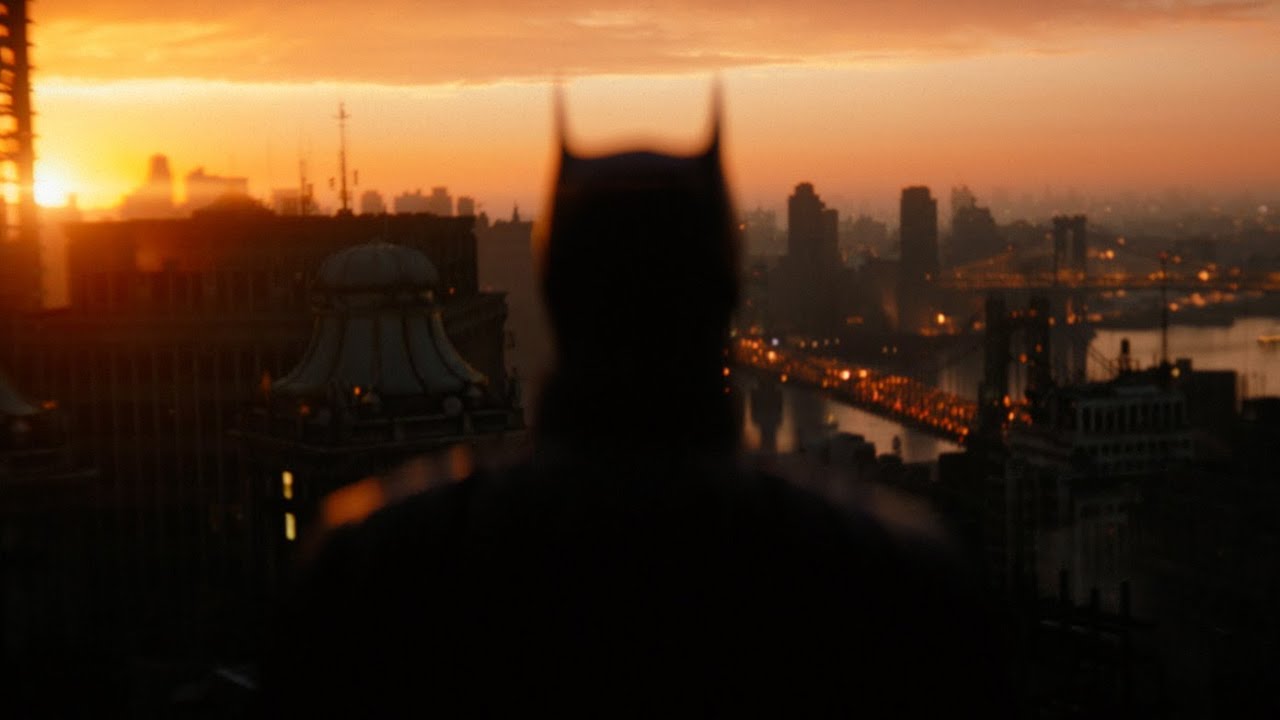
THE FILM
For his masterful reimagining of the Batman universe, director and co-writer Matt Reeves went back to the basics. His film is first and foremost a detective story - as were the original comics. It lands firmly in the neo-noir genre. The mystery not only revolves around the hunt for a serial killer, and the unmasking of citywide corruption, but also a hunt by our protagonist for his own true self: that part of him lost when he witnessed his parents’ murder. His first vocal utterance in the film - “I am Vengeance” - sounds as much like a primal scream as a declaration of intent.
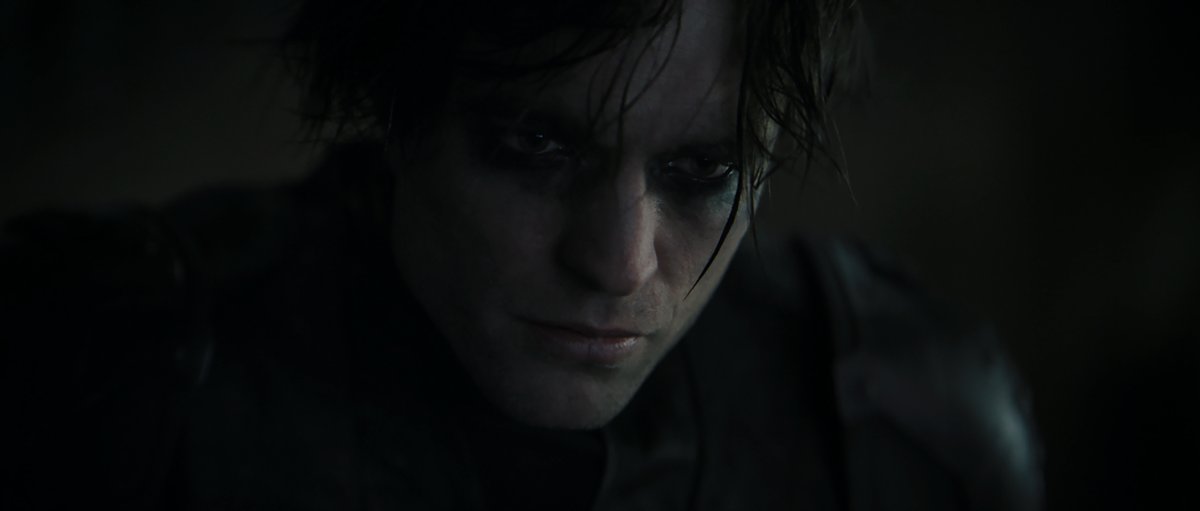 Robert Pattinson as Bruce Wayne/The Batman
Robert Pattinson as Bruce Wayne/The Batman
This Batman is deeply scarred on the outside as well as on the inside - a fact repeatedly emphasized whenever Robert Pattinson doffs assorted garments (no doubt to the delight of Team Edward groupies everywhere), revealing past scabrous wounds. As he prowls Gotham’s mean streets, Batman is in full PTSD mode, wailing on assorted villains with almost Messianic brute force. In between bouts of vigilante justice he is often to be found brooding magnificently in shadowy corners, eyeing the feline charms of Selina Kyle, aka Catwoman (a stunning Zoe Kravitz), with a yearning as palpable as his terror of coming out of his shell.
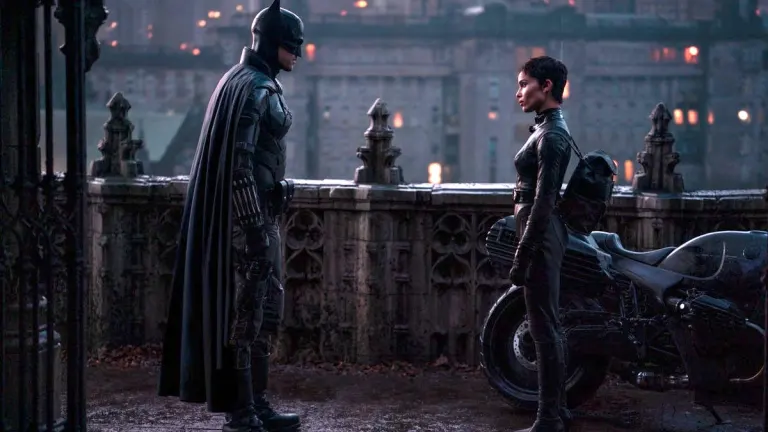 Robert Pattinson and Zoe Kravitz
Robert Pattinson and Zoe Kravitz
The Batman is lost and deep down he knows it. The film charts his struggle to at least begin breaking free of his demons while solving the case. And one of the great strengths of the film is that this is a hero in a constant state of emotional volatility. We are deeply invested in his journey.
Reeves has talked about his dominant approach to story and film-making as being subjective. He wants the audience to be emotionally intertwined with his characters. For The Batman this means that we are experiencing the events of the film in Bruce Wayne’s skin, and it’s not a comfortable place to be.
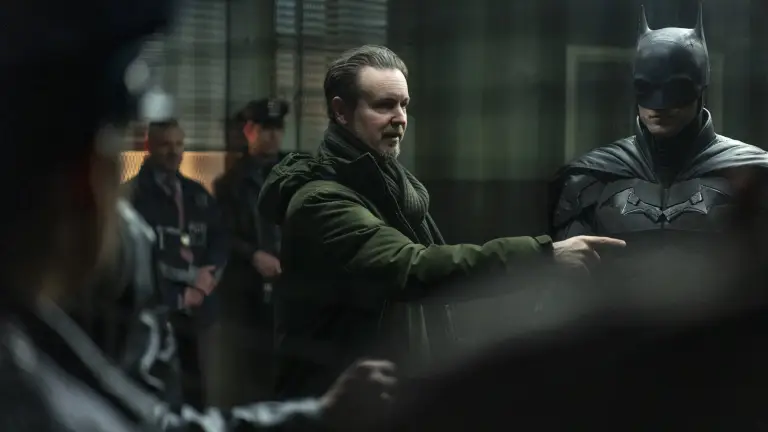 Matt Reeves on set with Robert Pattinson
Matt Reeves on set with Robert Pattinson
In scenes involving other, often less sympathetic characters, Reeves again pushes the viewer into subjectively identifying with those characters. Think of the epic car chase experienced largely from the Penguin’s point of view, or the many scenes where the camera literally becomes the Riddler (a suitably eerie Paul Dano) as he carries out his crimes.
This is all in sharp contrast to Christopher Nolan’s approach in The Dark Knight trilogy, which was far more objective and emotionally distanced. You can readily see the difference in how the two directors shoot their respective Batman films. Nolan tends to favor wide shots and a God-like perspective, whereas Reeves is all close-ups, medium shots, and subjective point-of-view shots filmed with long lenses where not everything is necessarily in focus. In Reeves’s film the look and mood is relentlessly noir. Even the few daylight scenes outdoors hang heavy with gloom - until the final parting of Batman and Catwoman after they save the day. Is that hope creeping into the early dawn light? They ride their respective cat and bat bikes through Gotham’s eerily calming cemetery, continuing along a wooded lane in a strange mating dance of mechanical speed and grace. At the final fork in the road they go their separate ways. This is all filmed in a beautiful soft-hued panning shot on a long lens by cinematographer Greig Fraser, who deserves another Oscar to join the one he won for Dune. Finally we feel like some kind of liberating catharsis may have begun.
But the final shot, with the Batman heading back to the mean streets of Gotham, crouched over his bike, his jaw set in grim determination, music crescendoing, tells us he’s not out of the woods yet…..
THE MUSIC
Music and sound design are in some ways the most important tools for a filmmaker who is intent on drawing the viewer into this kind of totally subjective experience, where every little twist and turn of the characters’ emotions need to be clearly delineated. A skilled composer can add so many layers to what is happening onscreen, simply by the choice of a judicious note here, an unexpected (or expected) chord there, or a particular instrument, or blend of instruments. The music can play with the scene, or against it, or even somewhere in-between.
Despite the fact that The Batman is a huge Hollywood action movie, there is something very intimate about it. We are right inside the film, and the music has a great deal to do with that.
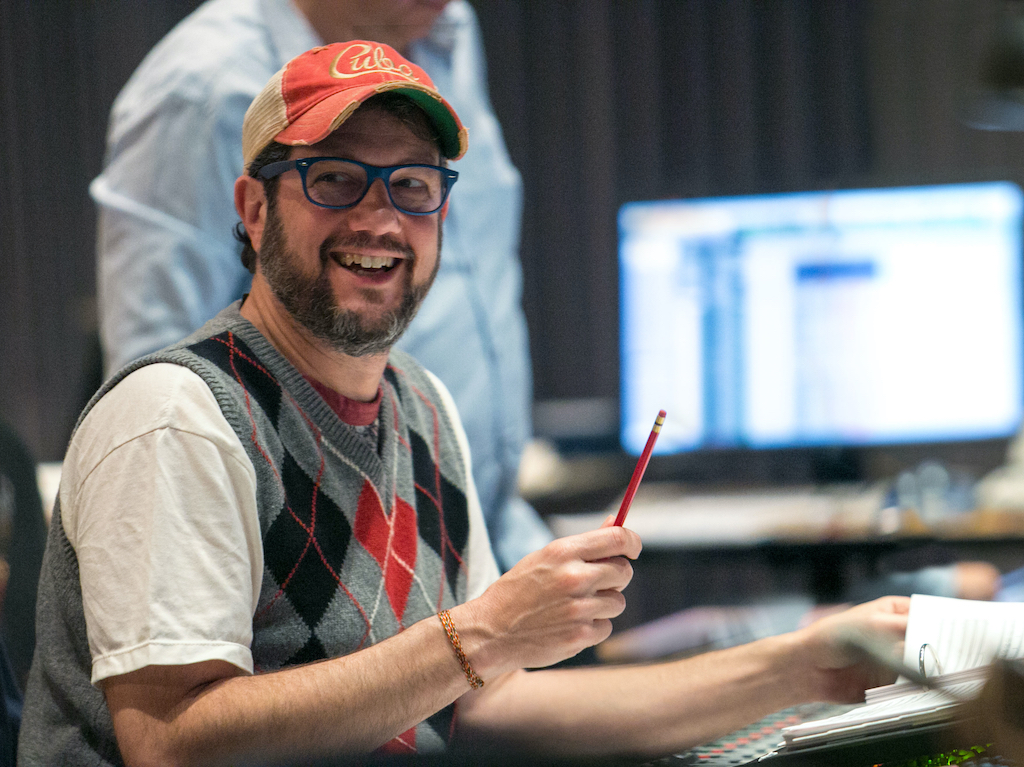 Michael Giacchino
Michael Giacchino
Michael Giacchino is one of the most interesting and versatile of younger film composers. His work ranges from the John Barry/Lalo Schifrin stylings of The Incredibles movies to the J.J. Abrams reboot of Star Trek. Like many young film composers today, Giacchino got his start in video game scoring, then transitioned to TV (Alias, Lost), and then film. He has worked regularly with The Batman director Matt Reeves since Cloverfield (2008).
For The Batman Giacchino opts largely for a pared down musical idiom. There are big themes, but they reveal themselves slowly. Often the score is more about short motivic writing. Take the theme for the Batman himself. It starts from an obsessive exploration of something as ordinary as a major third (albeit in a minor key), stated over and over again with the same rhythm. It is a four note expression of dread and fear one moment, hammer blows of heroic assertion the next. Inner darkness is made manifest. But it is also an expression of a determination to confront Evil. It undulates relentlessly throughout the film in different guises. Evil may be everywhere, within and without, constantly threatening to overwhelm the city like the tidal wave unleashed by the Riddler as his final act of cleansing; but so is Good, however imperfect. The music captures that dichotomy to perfection.
Music of another kind plays a key role in the film’s chilling opening sequence. The first thing we hear are the familiar and comforting strains of Schubert’s Ave Maria, a plea for Divine mercy. But visually we are looking down on a street scene, with assorted passers-by, and then focusing on what is going on inside a mansion across the street. Heavy breathing intrudes on the music.
This is the Riddler’s POV, and he is stalking his first victim, Gotham’s Mayor.
When the violent deed is done (with clearly sexual intensity) and the Riddler embarks on his post-coital preparation of the body for its public discovery, the music morphs into Giacchino’s answer to Schubert’s angelic grace: a solo boy’s voice etching out an unanchored melody set against discordant plucking harp and deep brass.
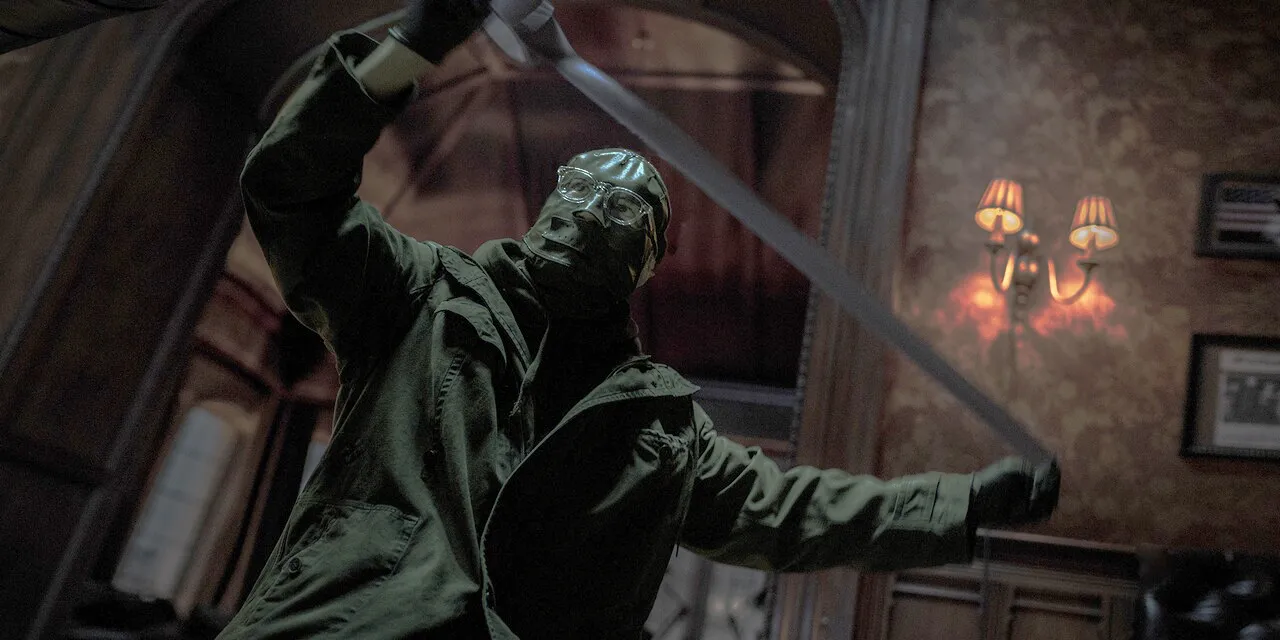 Paul Dano as The Riddler
Paul Dano as The Riddler
Nowhere in the film is any clue given as to the cause of the Riddler’s madness and mission, save for this music evoking lost innocence, a hint of some childhood trauma which sets him on his path. This is The Riddler's Theme.
Mayoral Ducting
Switching to Robert Pattinson’s brooding voice over, the Batman chord makes its first appearance as Bruce Wayne dons his mask and cape and disappears into the night. We witness assorted wrongdoers going about their nefarious business until the Bat signal appears in the sky. The music ticks ever onward, the four-note theme beating out its signal of imminent doom as villains peer into the shadows, knowing the Batman could appear at any moment.
Can’t Fight City Halloween
As Pattinson’s voice-over intones: “Fear is a tool…. They think I’m hiding in the shadows….. But I am the shadows”, the music concurs.
In the subway a gang of thugs chases down an innocent bystander, and is about to give him a serious beating. Then they hear something: footsteps approaching from a corridor black as night. But not normal footsteps. These footsteps pick up on the steady pulse of the earlier music, beating out their promise of imminent retribution like distorted drums (a very good example of how this soundtrack successfully elides music with sound design). The Batman appears. The gang leader attacks, only to be felled by a fury of fists.
“I am Vengeance…..”
It’s Raining Vengeance
Here, as throughout the score, Giacchino deploys a huge orchestra with finesse. One moment we will be in a musical close-up, with tiny instrumental gestures hinting at something more ominous on the horizon. When that ominous something heaves into view it is with the full weight and fury of a large orchestra behind it, dominated by heavy brass and percussion (tubular bells, drums and piano prominent). Strings are more likely to be scratching and screeching as soaring. We are getting a full display of the kind of compositional method so effectively deployed by Penderecki and Lutoslawski in their 20th century rebellions against tonality. Note clusters and atonal wailings litter the score. Electronically created sound is used sparingly but effectively. Some of the weirder effects are actually derived from regular instruments. This avoids the trap of having a soundtrack be dated by its use of period-specific synthesizers etc.
As the film moves into the discovery of the Mayor’s body and the reveal of the Riddler, the music delivers a heart-stopping coup de cinema. The Batman peers at the young boy who discovered his father’s body, and sees himself - after his own parents’ murder - reflected back in the boy's traumatized eyes. In steal the quietly thrumming chords of Nirvana’s song - “Something in the Way”. We realize that the Batman theme is derived from the chord underpinning Kurt Cobain’s lament, alluding to - if not directly referencing - a period of despair and homelessness the singer suffered as a teenager.
“Underneath the bridge
Tarp has sprung a leak
And the animals I’ve trapped
Have all become my pets
And I’m living off of grass
And the drippings from the ceiling
It’s okay to eat fish
‘Cause they don’t have feelings….”
Something in the Way (Nirvana)
Apparently this song was in Matt Reeves’s mind throughout his scripting process, and its integration into the film - and the score - goes far beyond how pre-existing songs are usually sprinkled across movie soundtracks. It reappears at a significant moment towards the end of the film.
As the score proceeds other themes emerge, most notably a sinewy, slithering figure for strings which characterizes the Batman’s initially reluctant ally, Selena/Catwoman. Okay, it’s an obvious musical trope, but it’s done so effectively I do not have the heart to begrudge it. Eventually this morphs into a more extended Catwoman theme: on the soundtrack album it is fully stated in a lovely arrangement in the later track Catwoman.
Catwoman
Another unusual aspect to the genesis of the film and its score is the fact that before Reeves had even finished casting, Giacchino had already composed and recorded with a small orchestra the Batman theme. Reeves has revealed that listening to the music deeply informed Pattinson’s approach to the title role. Subsequently Giacchino produced other demos of the main themes which were a huge help to the actors during production.
Having music on set was a standard practice during the silent days, helping to set the scene for the actors. It is a less common practice in the sound era, but some notable directors have used it. For example, Kubrick played back Bartok and Penderecki during the shooting of The Shining, getting the actors to time their lines and moves to the music that would end up on the soundtrack to those specific scenes.
A later scene in The Batman which demonstrates how well planned the music is in relation to the sound design is the car chase I alluded to earlier. So often in such sequences the music feels like it is in competition with the sound effects, and rarely does it come out well. Here Giacchino punctuates the action perfectly with massive brass chords, drums and note clusters in the strings. The sound effects almost feel like they are part of the score, and vice-versa, so dexterously is this sequence assembled.
Highway to the Anger Zone
By contrast, listen to the last cue of the film - the music that accompanies that final scene between Batman and Catwoman I described earlier.
After all the constrained dissonance and obsessive motivic repetition that have dominated the soundtrack, the full Batman theme unfurls in rich string lines. Simple melody and harmony have their day. Finally the brass enter to state the theme more forcefully. But this doesn’t feel like a hero’s march to glory. No, this may be music of steadfastness in the face of overwhelming odds, but it is also music of yearning and loss. This sequence is an excellent example of how good film music can add many levels of complex emotion and ideas to the moving image. In conjunction with those beautifully elegiac final shots, music captures the fully human dimension of what the Batman has sacrificed, and will continue to sacrifice, as he struggles on.
All’s Well That Ends Farewell
You can probably tell by now that I am all in on how well this score works within the context of the film. But how does it play away from the movie, as a pure listening experience at home? Well, here I have to reluctantly admit to a bit of listener fatigue. For me this kind of film scoring only yields a certain amount of pleasure as a music-only listen. It can start to pall after a couple of LP sides - not that one isn’t constantly delighting in the virtuoso use of the orchestra to create remarkable sonorities. When the score does occasionally come up for air from the pervasive noir gloom, as in the funeral scene, you can hear how Giacchino sinks into more conventional scoring with, I suspect, some gratitude to be writing traditional melodies and harmony. The lyrical string lines soothe the ear (and the nerves) like balm.
Funeral and Far Between
No, this is a score that for this listener is best delivered in smaller chunks - one record at a time would be my recommendation. It is for this reason alone that my rating for the music itself descends from a 10 to a 9. I may be in a minority here - I can imagine avid fans spinning these disks without any such caveats.
Incidentally the soundtrack album concludes with what I take to be the original “suites” that Giacchino presented to the director before filming commenced (though possibly re-recorded here). These tracks - The Batman, Catwoman, and The Riddler - are an excellent way to hear the essence of the score in shorter form, and lead nicely into the piano solo that accompanies the end credits: Sonata in Darkness. This is performed by the great Gloria Cheng, a central figure in the contemporary music scene here in Los Angeles (she is on the faculty at the UCLA Herb Alpert School of Music). She is a champion of film music, as demonstrated in her 2016 film, Montage: Great Film Composers and the Piano.
Sonata in Darkness
THE RECORDS
And how does all this sound at home? Well, owing to Covid protocols, the orchestra was recorded at Abbey Road in two studios simultaneously. Further material was recorded and added in Los Angeles. The lack of a purist “audiophile” recording and soundstage presentation shouldn’t deter the listener: movie scores are largely multitrack, remixed-to-the-nth degree affairs these days. You can be pretty sure this all ended up as a ProTools session anyway, so I am afraid digital is the order of the day. Whether it is due to the source material or the mastering, the aural presentation feels somewhat compressed and constricted in the big climaxes, but enjoys some lovely instrumental detail and terrific punch in the brass, percussion and those scorching strings: inevitable tradeoffs given the mode of recording and mastering.
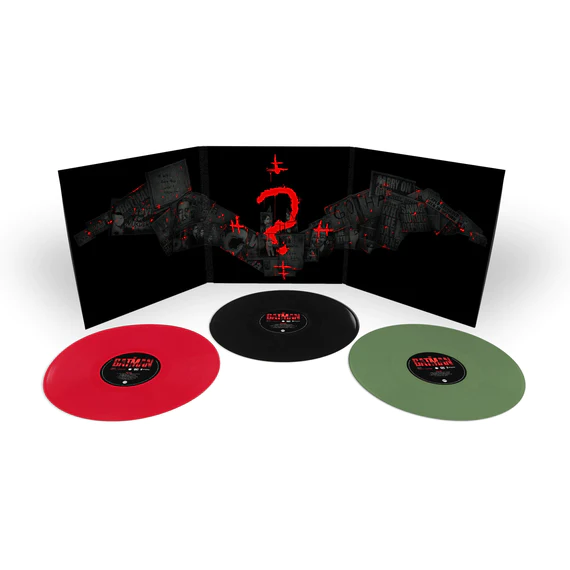 Mondo is a boutique label out of Austin, Texas which specializes in all manner of bespoke posters etc. for new and classic genre movies, distinguished by specially commissioned artwork. Film music buffs have much to be grateful to Mondo for, with a series of marvelous soundtrack releases over the last 10-plus years. Platters are often issued in colored and splattered vinyl of every imaginable hue. It is not uncommon for these limited editions to be sold out within hours; subsequent black vinyl editions stick around for longer. The currently available edition is pictured above; for the OOP splatter version you will have to venture onto the usual second-hand/resale sites.
Mondo is a boutique label out of Austin, Texas which specializes in all manner of bespoke posters etc. for new and classic genre movies, distinguished by specially commissioned artwork. Film music buffs have much to be grateful to Mondo for, with a series of marvelous soundtrack releases over the last 10-plus years. Platters are often issued in colored and splattered vinyl of every imaginable hue. It is not uncommon for these limited editions to be sold out within hours; subsequent black vinyl editions stick around for longer. The currently available edition is pictured above; for the OOP splatter version you will have to venture onto the usual second-hand/resale sites.
I have purchased many Mondo sets in the past. It is reasonable to assume that the mastering is from digital, but I have never found it lacking. You will, however, have to put up with differing degrees of less-than-perfect vinyl. However, I am happy to report that this edition of The Batman on three different solid colored platters is better than most, though some pesky ticks have persisted through several cleanings. The initial pressing run sold out quickly, but it is now back in stock. If you’re interested, don’t wait too long to pull the trigger: a casual browsing on eBay will demonstrate some of the ridiculous prices OOP Mondo pressings now fetch.
Whether it is due to Covid or just a shift in priorities, Mondo has been releasing far less soundtrack vinyl of late. This is a great shame. However, their back catalogue is full of riches, and I talk about some of them here:
WHAT TO LISTEN TO NEXT:
Any of Giacchino’s scores will yield distinct pleasures, but why not start with The Incredibles - it is just so much fun.
Earlier Batman scores abound. I would recommend beginning with the Danny Elfman entries from the 80s. They did set an entirely new tone for action and comic book film scores. Mondo has Elfman’s score for Batman Returns in both a 2-LP and expanded 3-LP edition on vinyl in stock. I am also a big fan of Eliot Goldenthal’s scores, so his Batman Forever opus is highly recommended. Try and track down the La-La Land expanded edition if possible.
Mondo also has a deluxe box set of music from the Batman animated series. If that’s your thing, $200 will buy you hours of listening pleasure.
The Mondo website, where you will find the best prices on all their in-stock product, including The Batman 3-LP set, is here: https://mondoshop.com
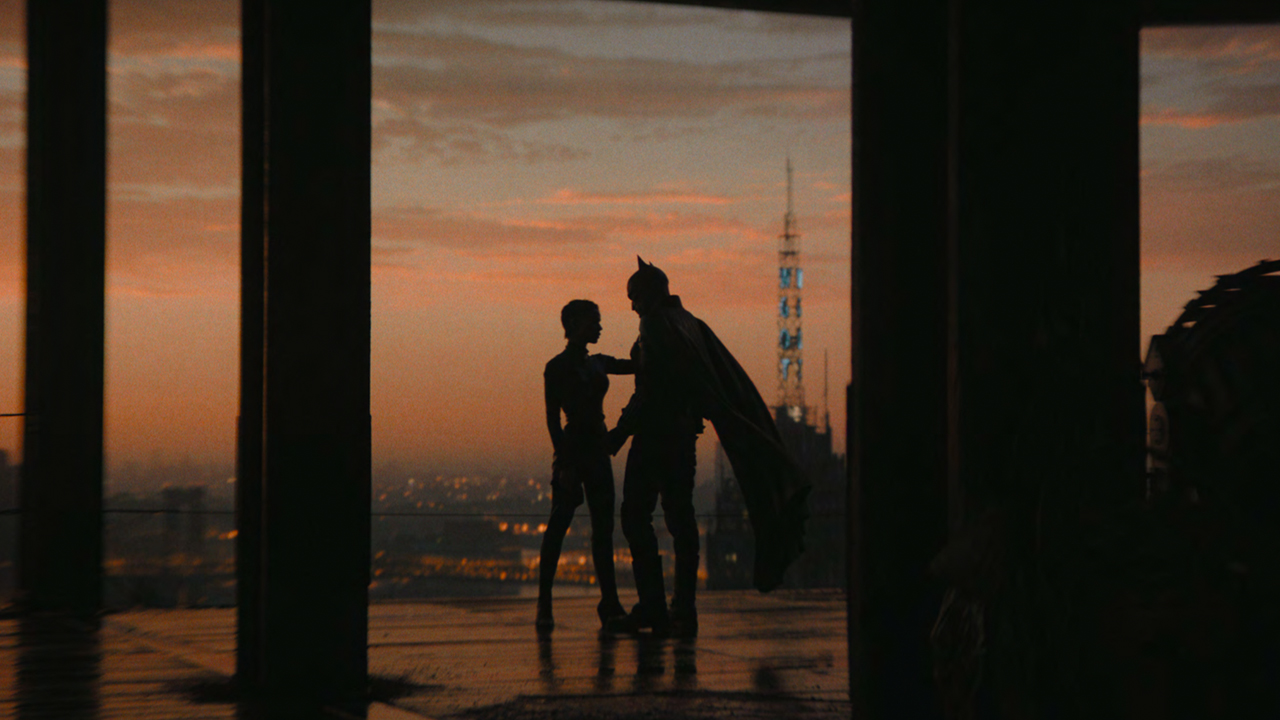




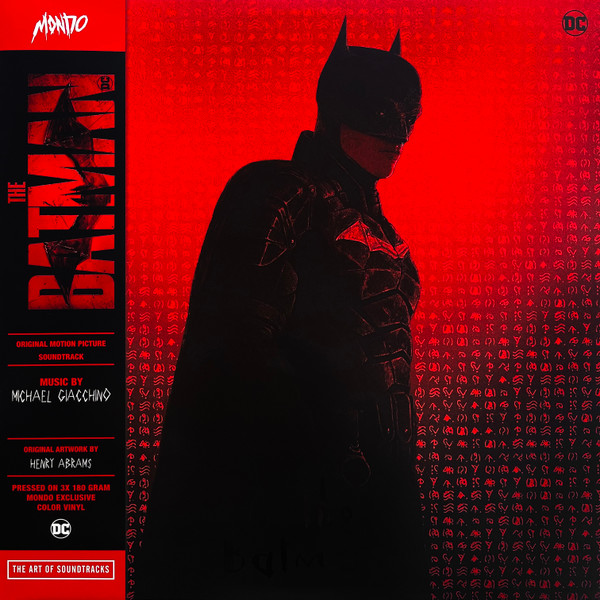







































.png)








